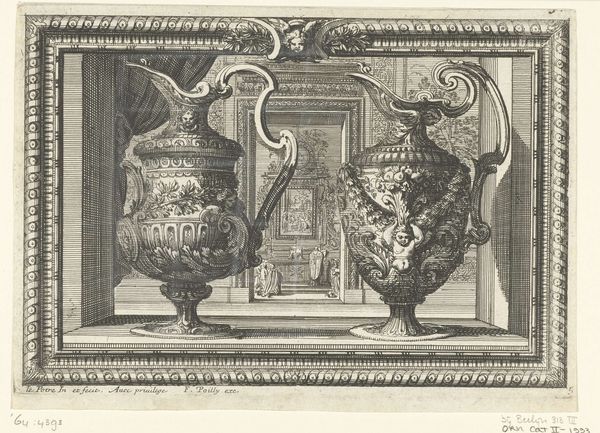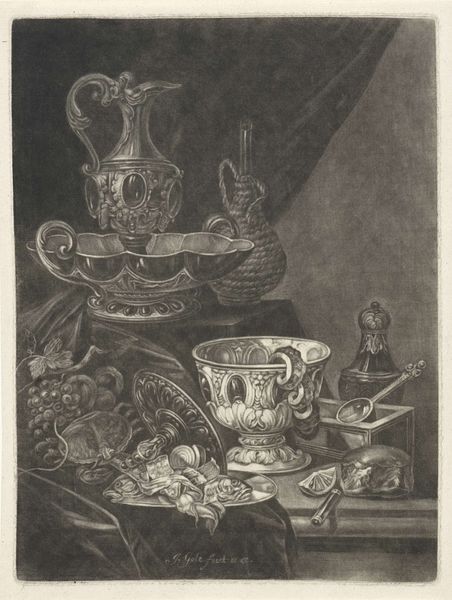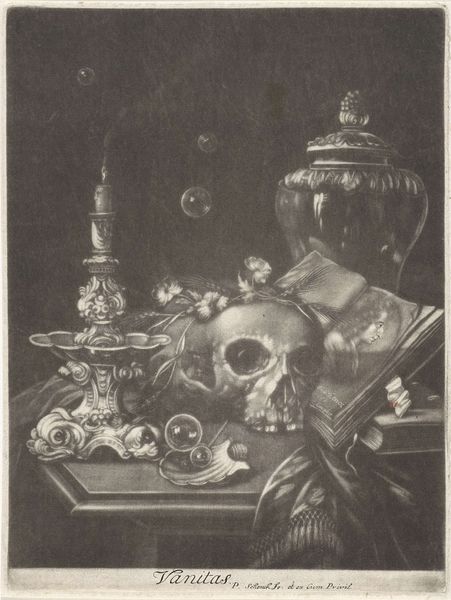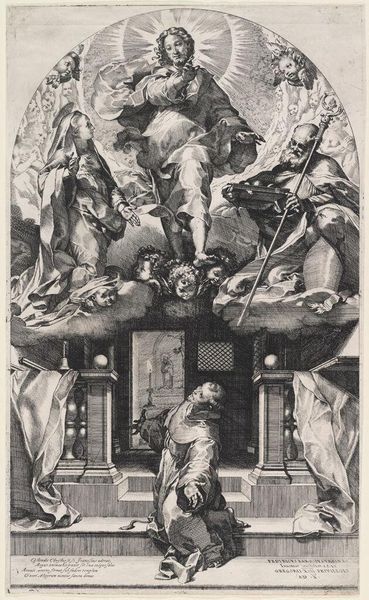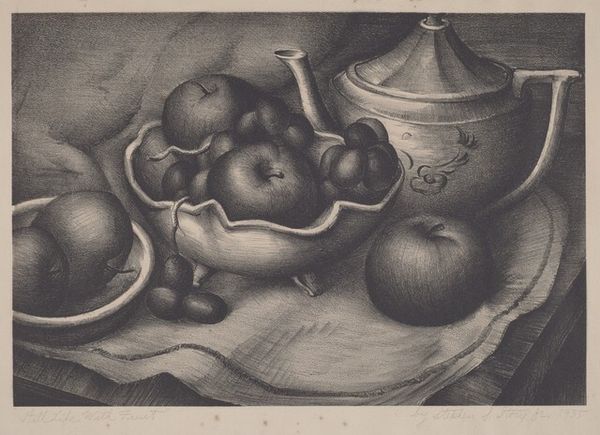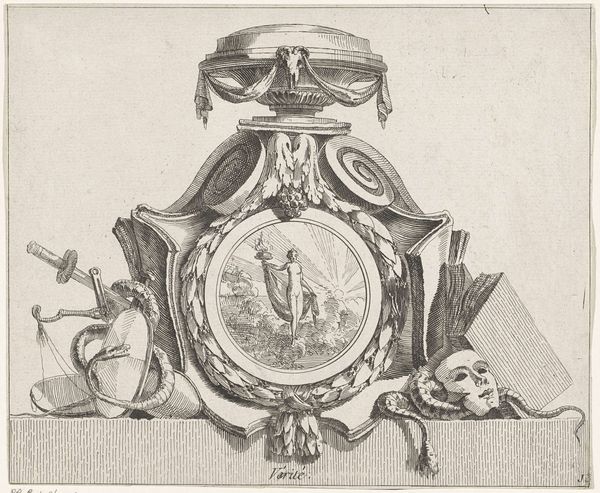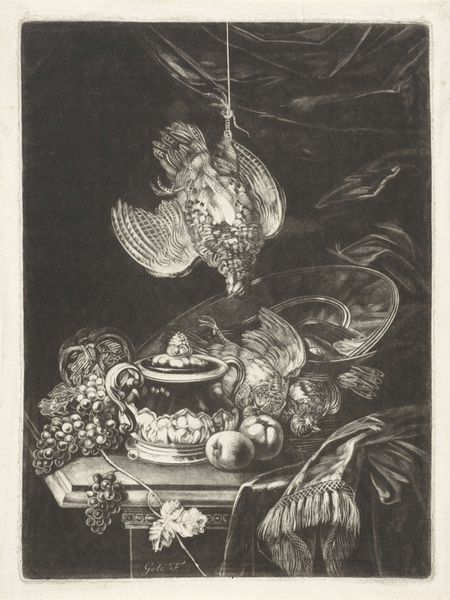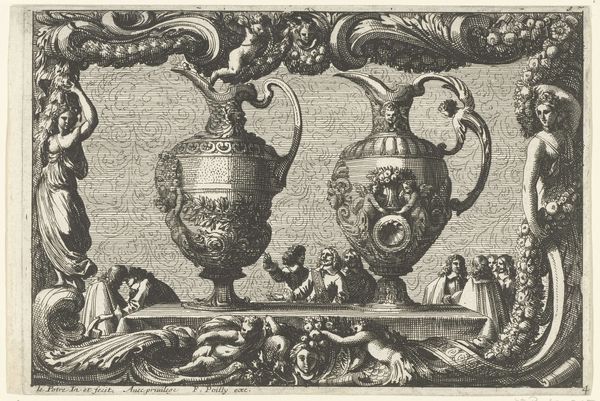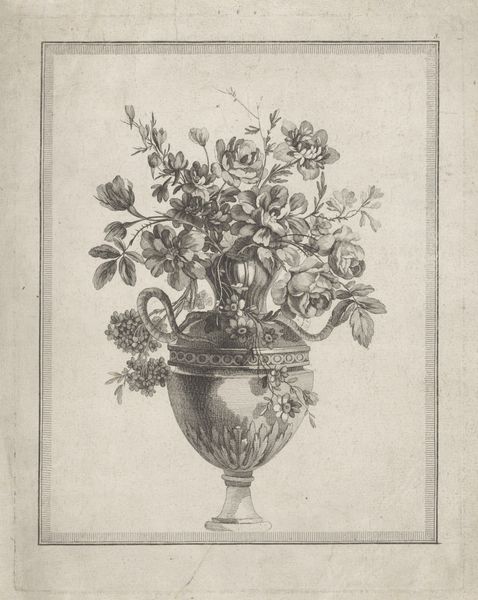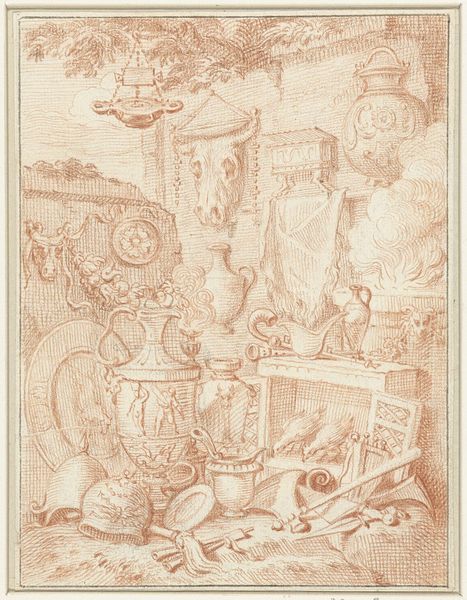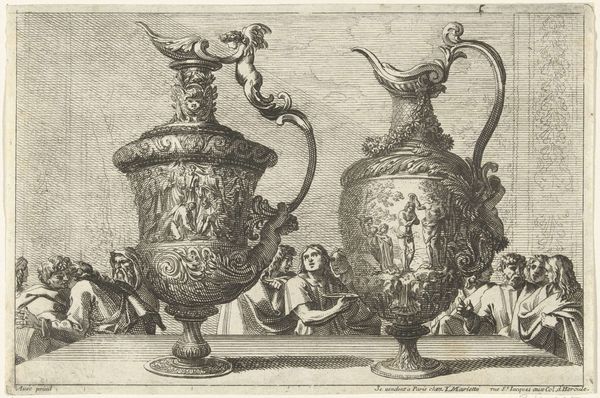
painting, oil-paint, glass
#
baroque
#
dutch-golden-age
#
painting
#
oil-paint
#
sculpture
#
glass
#
mixed media
Dimensions: 66 x 78.1 cm
Copyright: Public domain
Willem Kalf painted this "Still-Life with a Late Ming Ginger Jar" sometime in the mid-17th century. It showcases the kind of luxurious commodities that were streaming into the Netherlands at that time. Consider what this image tells us about the social and economic transformations taking place in the Dutch Golden Age. Kalf’s painting captures the way Dutch traders were appropriating Chinese porcelain. These objects had become signs of wealth and worldliness, and his paintings aestheticized global trade in ways that served the interests of Dutch merchants and their families. This is an exquisite arrangement of costly goods set against a dark backdrop. This particular combination of objects—the Chinese jar, the ornate glassware, the silver platter, and the patterned textile—speaks to the way the Dutch constructed their identity through material possessions. To understand Kalf’s still life fully, one must look at the history of Dutch trade and the role of the Dutch East India Company. It is through the study of such economic and institutional forces that the image comes into focus.
Comments
No comments
Be the first to comment and join the conversation on the ultimate creative platform.
